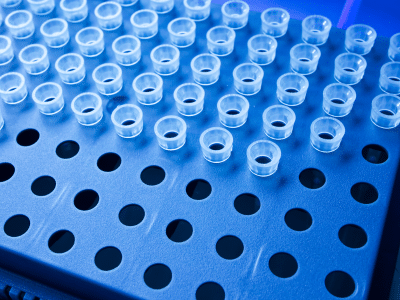For each use of glass bottle in the laboratory, corresponds THE right cap and THE right sealing option.
Capsules, cap, capes : you can benefit from different capping techniques, but in any case, it is the technical characteristics of the material used in the design of the plug itself, combined with the design of the joint that will make the difference.
Each jar has its lid! What works for jam jars (or lovers…) is just as valid as for your lab glassware: for each use on the bench, there’s its cap and its joint.
We invite you to browse the different proposals offered on the laboratory glassware market.
Choosing the right capping or sealing solution will require a good knowledge of the offer, in terms of materials and characteristics to adapt it to the content and the use of the container.
3 materials for laboratory sealing glassware caps: make your choice!
Different materials – whose physico-chemical characteristics conditioned the use of the container on the benchtop – can be used in the composition of the caps.
Bakelite : A Bakelite cap resists high temperatures (120 ° C) and limits the release: it will therefore be the material to be preferred for samples subjected to high heat.
Termodur: To keep a sample in a glass container for a long time, you need to be sure that the cap will not deteriorate over time. A Termodur cap will therefore be recommended for this use.
Polypropylene: This lightweight – but also less resistant – material corresponds to everyday needs and will be your choice in routine.
2 sealing solutions for your laboratory glassware : follow the guide!
You have chosen the cap material that suits you, you can now take an interest in the 2 sealing options that exist:
Self-attaching accessories or lids:
The lips at the bottom of the cap, or capsule, made of the same material as the cap itself, ensure the tightness of the container. This may include:
Plating lips:
The lips of these self-attaching plugs apply pressure against the top of the screw pitch. Once the accessory is fully screwed in, the sealing of the container is ensured. This solution – which allows a slight cap/container offset – is considered less waterproof.
Cone or covering lips:
The lips of these self-attaching plugs go inside the seal, and thus, apply pressure against the walls of the screw pitch. This option is more watertight, but prohibits attaching an accessory below the plug.
The jointed caps:
The Triseal (TS) seal, composed of tresylene and polespan, is a semi-rigid foam of inert white color and very waterproof. It resists gamma radiation sterilization, but does not withstand temperatures above 60°C. This seal is perfectly suited for use in combination with syrup-type PET bottles.
The Aran S seal has inertia and sealing properties similar to the Triseal seal described above. It is in the form of a brown cardboard. This seal is perfectly suited for use in combination with syrup-type PET bottles.
The Polyethylene (PE) seal is present in tamper-proof Vistopp capsules. It is recommended for syrup-type glass bottles, but not for PET bottles.
The Caoutchouc seal withstands temperatures of about 120°C. We recommend it when you have to be vigilant at the level of leaching. In fact, it releases less than other joints. It is recommended for bottles requiring autoclave passage.
The Teflon seal is very rigid and resistant. It is perfectly suited for chemical samples, ensuring the absence of interactions. Its PTFE (polytetrafluoroethylene) composition requires to be pushed inside, instead of being stuck on the cap.
The rigid aluminium seal has the advantage of not deteriorating when it is in contact with aggressive products. It will thus be suitable for very specific laboratory analyses with products that cannot be in contact with plastic.
If you don’t want to be wrong, you can also simply trust an expert, and contact us by completing the form below!




